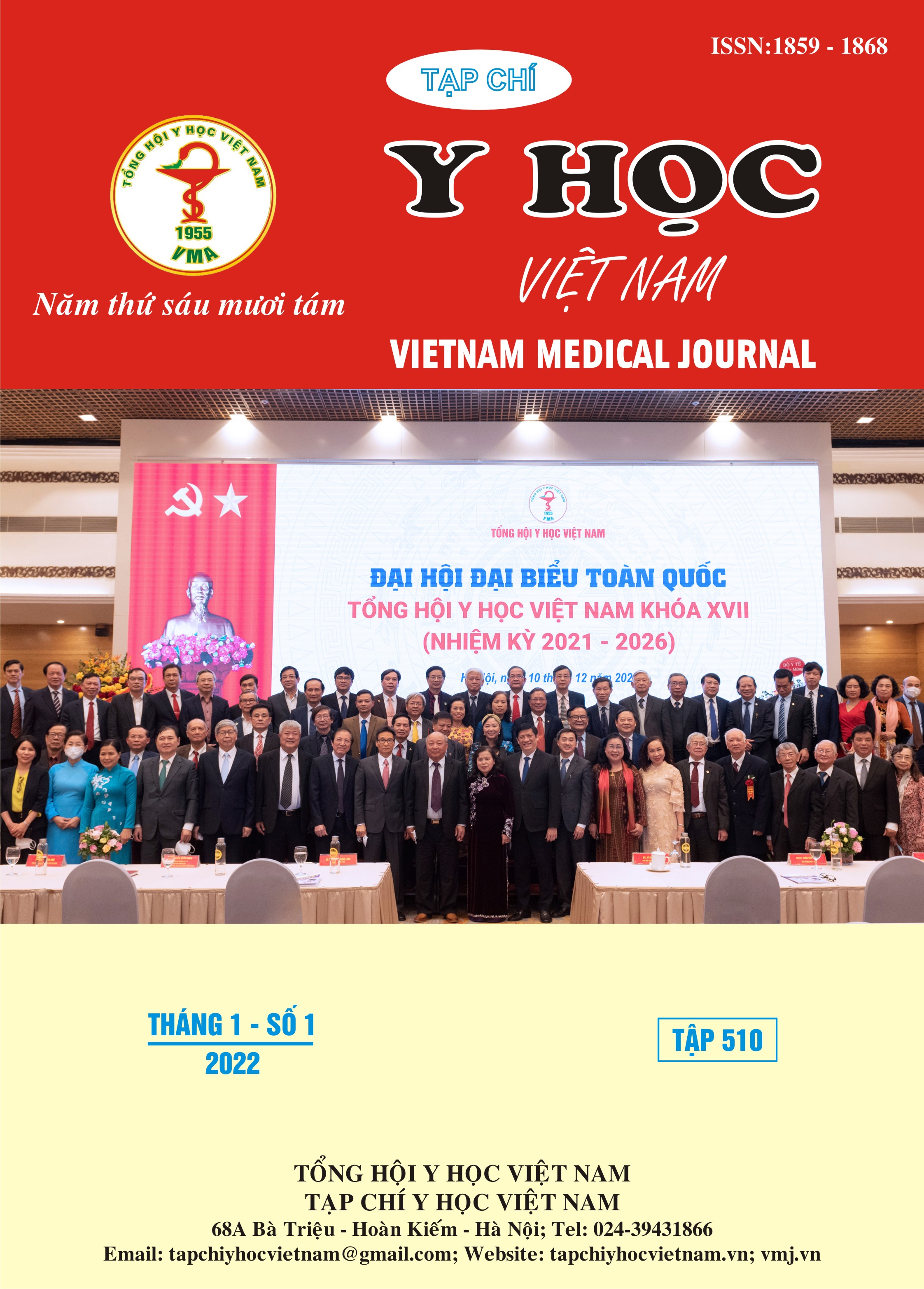ETIOLOGY, MANAGEMENT AND SHORT-TERM OUTCOME OF ESOPHAGEAL PERFORATION
Main Article Content
Abstract
Introduction: Esophageal perforations are associated with a high rate of morbidity and mortality. The optimal cure for individual is still a controversy. Management is dictated by location of the perforation and concurrent injuries. Therefore, we review and evaluate the principles of clinical characteristic and treatment of perforations. Materials and Methods: A case-series study was conducted to describe etiology, clinical characteristic and to evaluate the outcomes of treatment for esophageal perforation at the Binh Dan hospital in a 5 years period, from 06.2014 to 06.2019. Results: There were 36 patients, 24 male and 12 female, average age 46.6 years old. Site of perforation includes 17 cases at cervix (47%), 15 cases at thorax (42%) and 4 cases at abdomen (11%). Main mechanisms of esophageal injury are foreign bodies (41.7%) and complication of gastric endoscopy (33.4%). CT scan examination finds 93.9% cases. Non-operation treatment were successful in 6/8 cases. The majority of cases are amenable to primary repair. Overall mortality in patients is estimated at 8.3%. Conclusion: CT scan with oral contrast provides high sensitivity and reveals more finding information. Non-operation should be considered when the clinical situation allows for a less invasive approach. Primary repair is the treatment of choice for esophageal perforation with highly successful rate.
Article Details
Keywords
esophageal perforation, primary repair
References
2. Lê Quang Nhân (2015) "Nội soi khâu kín lỗ thủng thực quản bằng over-the-scope clip: một ca lâm sàng". Tạp chí Y học Thành phố Hồ Chí Minh, 19, tr. 39-42.
3. Nguyễn Công Minh (2013) "Hội chứng Boerhaave hay Hội chứng vỡ thực quản do nôn ói mạnh tại bệnh viên Chợ Rẫy và Bệnh viện cấp cứu Trưng Vương trong 14 năm (1999-2012)". Tạp chí Y học Thành phố Hồ Chí Minh, 17, tr. 44-52.
4. Huu Vinh V., Viet Dang Quang N., Van Khoi N. (2019) "Surgical management of esophageal perforation: role of primary closure". Asian Cardiovasc Thorac Ann, 27 (3), tr. 192-198.
5. Chirica Mircea, Kelly Michael D., Siboni Stefano, Aiolfi Alberto, Riva Carlo Galdino, Asti Emanuelevà cộng sự (2019) "Esophageal emergencies: WSES guidelines". World Journal of Emergency Surgery, 14 (1), tr. 26.
6. Dickinson Karen Joanna, Blackmon Shanda H. (2015) "Endoscopic Techniques for the Management of Esophageal Perforation". Operative Techniques in Thoracic and Cardiovascular Surgery, 20 (3), tr. 251-278.
7. Soreide J. A., Viste A. (2011) "Esophageal perforation: diagnostic work-up and clinical decision-making in the first 24 hours". Scand J Trauma Resusc Emerg Med, 19, tr. 66.
8. Hasimoto C. N., Cataneo C., Eldib R., Thomazi R., Pereira R. S., Minossi J. G.và cộng sự (2013) "Efficacy of surgical versus conservative treatment in esophageal perforation: a systematic review of case series studies". Acta Cir Bras, 28 (4), tr. 266-71.
9. Misiak P., Jablonski S., Piskorz L., Dorozala L., Terlecki A., Wcislo S. (2017) "Oesophageal perforation - therapeutic and diagnostics challenge. Retrospective, single-center case report analysis (2009-2015)". Pol Przegl Chir, 89 (4), tr. 1-4.
10. White C. S., Templeton P. A., Attar S. (1993) "Esophageal perforation: CT findings". AJR Am J Roentgenol, 160 (4), tr. 767-70.
11. Brinster C. J., Singhal S., Lee L., Marshall M. B., Kaiser L. R., Kucharczuk J. C. (2004) "Evolving options in the management of esophageal perforation". Ann Thorac Surg, 77 (4), tr. 1475-83.
12. Attar S., Hankins J. R., Suter C. M., Coughlin T. R., Sequeira A., McLaughlin J. S. (1990) "Esophageal perforation: a therapeutic challenge". Ann Thorac Surg, 50 (1), tr. 45-9; discussion 50-1.
13. Young C. A., Menias C. O., Bhalla S., Prasad S. R. (2008) "CT features of esophageal emergencies". Radiographics, 28 (6), tr. 1541-53.
14. Mavroudis Constantine D., Kucharczuk John C. (2013) "Acute Management of Esophageal Perforation". Current Surgery Reports, 2 (1), tr. 34.
15. Sdralis E. I. K., Petousis S., Rashid F., Lorenzi B., Charalabopoulos A. (2017) "Epidemiology, diagnosis, and management of esophageal perforations: systematic review". Dis Esophagus, 30 (8), tr. 1-6.
16. Wright C. D., Mathisen D. J., Wain J. C., Moncure A. C., Hilgenberg A. D., Grillo H. C. (1995) "Reinforced primary repair of thoracic esophageal perforation". Ann Thorac Surg, 60 (2), tr. 245-8; discussion 248-9.
17. Blasberg Justin D., Wright Cameron D. (2015) "Management of Esophageal Perforation". Adult Chest Surgery. 2nd ed. McGraw-Hill,


